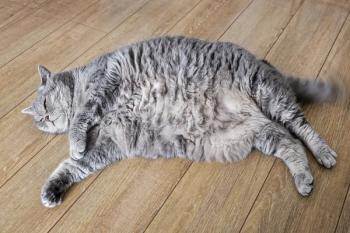
Hot Literature: Famcyclovir looks promising for cats with FHV-1
A recent study examined the safety and efficacy of orally administered famciclovir in cats experimentally infected with a pure strain of FHV-1.
Feline herpesvirus type-1 (FHV-1), a common infection in cats, causes respiratory and ocular disease. Furthermore, infected cats serve as a reservoir for the virus, and, after a primary infection, many cats are latently infected with periods of virus reactivation throughout their lifetimes. No antiviral agents are currently approved for use in cats, but several human products have been tried. Concerns with systemic preparations include questionable efficacy and toxicity. Topically applied medications have shown fewer side effects but require frequent application, and their efficacy in cats has not been established. A recent study examined the safety and efficacy of orally administered famciclovir in cats experimentally infected with a pure strain of FHV-1.
Sixteen healthy cats with no history of ocular or systemic disease were randomly divided into two treatment groups. All of the cats were screened to ensure that they were free of antibodies to feline immunodeficiency virus (FIV) and FHV-1 as well as antigen to feline leukemia virus (FeLV). These naïve cats were treated orally with 90 mg/kg of either famciclovir or lactose, depending on their treatment group assignment. They were then immediately inoculated with FHV-1. The cats were treated at this dose (90 mg/kg famciclovir or lactose) three times a day for 21 days.
Each cat was evaluated daily for evidence of disease and assigned disease scores based on ocular and respiratory parameters (ocular discharge, blepharospasm, conjunctivitis, sneezing, and nasal discharge). Every third day, a complete blood count, serum chemistry profile, and complete ophthalmic examination were performed. Once a week after inoculation, conjunctival samples were obtained and evaluated for inflammation. Additionally, samples were collected from the inferior conjunctival sac and used to quantify FHV-1 before inoculation, daily for one week, and then periodically throughout the study. The serum concentration of famciclovir was also monitored every other day after inoculation.
Perhaps most notably, no adverse effects were seen with this dose of famciclovir throughout the 21-day study. Furthermore, the cats treated with famciclovir gained weight throughout the study, while the cats in the lactose group initially lost weight. Although all of the cats developed corneal ulcers, the disease scores for cats in the famciclovir group were significantly lower than those of the lactose-treated cats. Clinical signs of disease, ocular inflammation, and virus shedding were all significantly decreased in the famciclovir treatment group.
This study's results are promising for the clinical usefulness of famciclovir. Since the severity of clinical signs associated with FHV-1 infection and virus replication were reduced, administration of famciclovir in cats appears to be efficacious. However, the incidence of corneal ulceration and the presence of abnormal tear production were unaffected by treatment and persisted for an extended period, so the authors caution that adjunctive topical therapies are warranted. Further research to better understand the pharmacokinetics and to determine optimal dosing and peak serum concentrations is needed.
Thomasy SM, Lim CC, Reilly CM, et al. Evaluation of orally administered famciclovir in cats experimentally infected with feline herpesvirus type-1. Am J Vet Res 2011;72(1):85-95.
Link to abstract:
Newsletter
From exam room tips to practice management insights, get trusted veterinary news delivered straight to your inbox—subscribe to dvm360.






